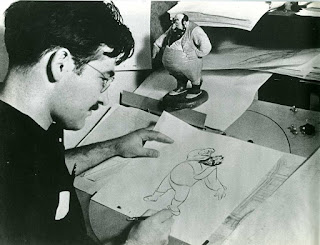Vladimir Peter Tytla entered the Walt Disney Animation studio in 1934 and became one of the greatest supervising animators of all time and mentor some of Disney's younger animators who would be known as "Disney's Nine Old Men".
In Japan Bill Tytla would have been referred to as "senpai" (which means senior) and he along with Freddy Moore (who designed the classic modern version Mickey Mouse) would school the Nine Old Men in the principles of "dynamics" and "appeal" respectively.
[Bill Tytla] brought the volatile acting of a man who had been around the world and had this worldliness of how things behaved. Bill did things of enormous scale..." - Marc Davis
An artist who could bring to life something as powerful and iconic as this:
And still be sensitive enough understand the subtleties of a delicate character like this, says much about the artist.
Bill noted in story meetings that a character's pose should be a reaction to something, otherwise it would be just a drawing.
Bill would be well known for animating Stromboli in Pinocchio, the devil Chernobog in Night on Bald Mountain, and Dumbo the elephant. In Dumbo he animated a performance that is still recognised today and causes viewers to tear, generations after its debut.
In 1994 animation historian John Canemaker organised an exhibition of Bill Tytla's works at the Katona Musuem of Art. Below is the catalogue of the exhibition. I originally found the catalogue on Michael Sporn's Splog to which he referenced the Hollywood Animation Resource.
Enjoy.












































